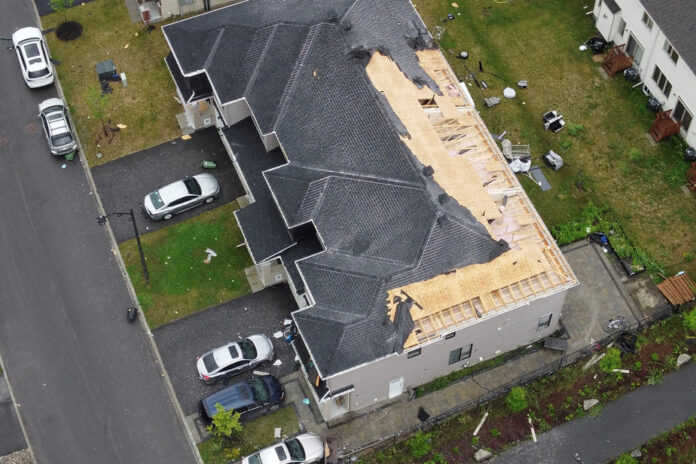(OTTAWA) As extreme weather events like tornadoes and derechos occur with increasing frequency in Canada, experts are calling on provinces to add measures to building codes to better protect homes across the country.
Researchers associated with the Northern Tornadoes Project (NTP) at Western University in Ontario point out that installing hurricane ties, steel devices that connect the roof to the rest of the house, costs about $200 per House. According to them, they should be mandatory in all building codes in the country.
“It is believed that if hurricane tie rods were mandated, homes would be 95% to 99% protected from having their roof torn off by a typical tornado in Canada,” said Connell Miller, who is a research associate. at the NTP.
On July 13, two tornadoes swept through southern Ottawa, damaging more than 100 homes in the Barrhaven neighborhood. The same day, in Quebec, a tornado that occurred in Saint-Thomas, in Lanaudière, caused damage to two barns and a house.
On Thursday evening, another tornado touched down in Metcalfe, about 30 kilometers southeast of Ottawa, during a severe thunderstorm.
In all these cases, the damage from the tornadoes mainly affected the roofs of the houses. Such damage could easily be avoided by better adapting buildings to extreme weather conditions, experts say.
“We’ve just seen these very big storms — not just tornadoes — and we believe that at minimal cost, we could build houses that are better designed to withstand extreme events,” said the executive director of the Institute of Catastrophic Loss Prevention, Glenn McGillivray.
In his view, adding measures like thicker siding, longer and closer tie rods for roofs, and hurricane tie rods would prevent most damage to homes during designated storms and tornadoes up to strength EF- 2, or about 220 km/h.
The NTP recorded 117 tornadoes in both 2021 and 2022, setting records for Canada.
During these two years, a total of 58 tornadoes were classified as EF-2, which is already relatively strong, but none met the criteria for the next level.
NTP experts conducted 447 severe weather investigations last year. In particular, they looked at the derecho which traveled 1,000 kilometers through highly populated regions of Quebec and Ontario in May 2022, killing 11 people and causing more than $1 billion in insured losses.
According to Mr. McGillivray, violent events used to occur within a few months of each other, but they now occur with a much higher frequency, to the point where resources are sometimes overstretched because the incidents overlap.
“Each year, hundreds, if not thousands, of homes are rendered uninhabitable due to storms. You can’t afford that in the midst of a housing crisis,” said McGillivray.
“So if we better prepare our homes to withstand extreme conditions, it will allow us to be more pre-emptive than reactive. »
Many developers, however, oppose the idea of changing building codes to include more stringent requirements for preventing extreme events, said McGillivray.
Part of their resistance is because of the added cost, but also because developers would have to train workers on updated protocols and go “outside the building standards that have been used for many decades.”
Even so, some builders, like Doug Tarry Homes, are already going beyond building code requirements by incorporating hurricane ties and truss screws into their projects.
Company president Doug Tarry mentioned that while hurricane ties are relatively inexpensive, the training of labor involved in installing these components is more of a burden for builders.
As a result, he noted, installing hurricane ties or the like adds about $1,000 to construction project expenses.
But even at that cost, he believes the game is worth the effort and he is pushing the rest of his industry to adapt to the reality of climate change.

